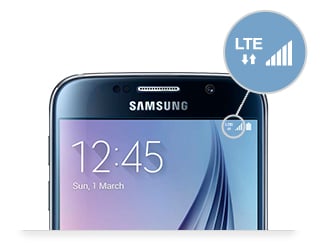What is an LTE Network?
A Long Term Evolution (LTE) network is a type of wireless communications network designed to provide broadband Internet and phone service to mobile phones and other types of devices. Voice calls on an LTE network are converted into small chunks of data, which eliminates the need for separate voice circuits. These types of networks are often marketed as "4G" and are capable of offering speeds that rival wired broadband services. They also offer increased capacity, which may help wireless carriers deal with the increasing amounts of data used by smart phones and other devices.
Behind marketing terms like 3G and 4G are a variety of individual technologies that power wireless phone and data networks. Each technology can be grouped by generation. Analog phone systems were first generation, the earliest digital networks used second generation or 2G technology, and about a half dozen different base technologies and incremental upgrades make up the third generation or 3G family. LTE and WiMax® are two more recent technologies that have been branded by most carriers as fourth generation or 4G, even though some networks based on these technology are below the International Telecommunication Union’s minimum speeds for 4G networks. Both technologies are expected to be integrated into many different types of devices including smart phones and tablet computers. In rural areas underserved by traditional broadband services, a WiMax® or LTE network may be the most practical choice for home or business Internet access.
Unlike earlier wireless technologies, LTE was designed from
the ground up with a strong emphasis on data. Instead of treating voice
and data separately, an LTE network uses Voice over Internet Protocol (VoIP)
technology, which breaks voice calls down into individual data packets
that can be transmitted over computer networks in the same way as any
other form of data. Earlier wireless networks relied upon a
resource-intensive circuit switching architecture originally developed
for traditional wired telephone networks, with separate technologies
layered atop for data access. LTE allows wireless carriers to finally
break with this legacy model and focus on building a high-speed network
that supports voice, data, and messaging.
For consumers, the chief advantage of an LTE network is speed. The first LTE networks, built in 2009 and 2010, had speeds roughly comparable to entry level packages of traditional wired broadband services, with download rates of about 5 to 12 megabits per second (Mbps). Revised versions of the specification call for theoretical peak download rates of as much as 300 Mbps, though speeds experienced by end users are likely to be far below this. Compared to earlier technologies, an LTE network also boasts much lower latency, i.e., the amount of time it takes data to travel from origin to destination. This is beneficial for online gaming, video conferencing, and other real-time services.
Although higher data rates and lower latency can attract customers, wireless carriers have also found the LTE network lucrative because it offers higher capacity than its predecessors. The LTE standard makes more efficient use of the limited number of radio frequencies allocated to each wireless carrier and also allows carriers to adjust the size of the wireless channel in order to balance speed against network congestion. More advanced transmission techniques could also reduce interference and provide stronger signals to customers in low-coverage areas.
For consumers, the chief advantage of an LTE network is speed. The first LTE networks, built in 2009 and 2010, had speeds roughly comparable to entry level packages of traditional wired broadband services, with download rates of about 5 to 12 megabits per second (Mbps). Revised versions of the specification call for theoretical peak download rates of as much as 300 Mbps, though speeds experienced by end users are likely to be far below this. Compared to earlier technologies, an LTE network also boasts much lower latency, i.e., the amount of time it takes data to travel from origin to destination. This is beneficial for online gaming, video conferencing, and other real-time services.
Although higher data rates and lower latency can attract customers, wireless carriers have also found the LTE network lucrative because it offers higher capacity than its predecessors. The LTE standard makes more efficient use of the limited number of radio frequencies allocated to each wireless carrier and also allows carriers to adjust the size of the wireless channel in order to balance speed against network congestion. More advanced transmission techniques could also reduce interference and provide stronger signals to customers in low-coverage areas.


Amazing. I always wanted to know the 4g and 3g significance. Thank you geekofall
ReplyDelete